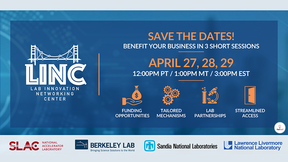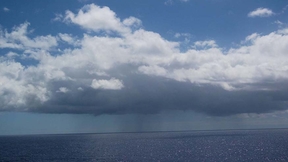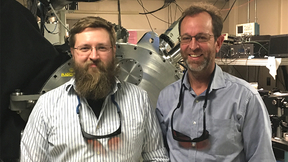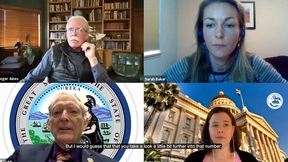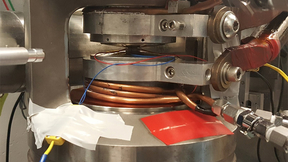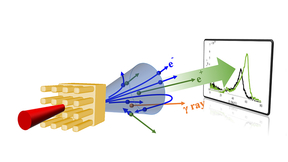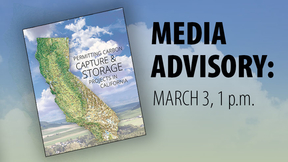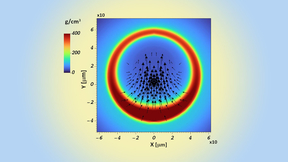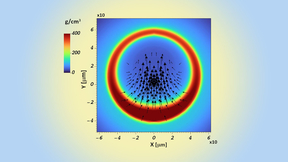Back
Science
Lab postdocs selected to participate in Nobel meeting
Three Lawrence Livermore National Laboratory (LLNL) postdoctoral appointees have been selected to attend the 70th annual Lindau Nobel Laureate meeting in Germany this June thanks to the University of California President’s 2021 Lindau Nobel Laureate Meetings Fellows Program. The three selected to attend the meeting are Oluwatomi (Tomi) Akindele, Matthew Edwards and Wei Jia…
Bay Area labs to host business partnership event
Three-day virtual event will showcase how businesses can tap into national labs' resources Lawrence Livermore National Laboratory (LLNL), Sandia National Laboratories, Lawrence Berkeley National Laboratory and SLAC National Accelerator Laboratory, as part of the Bay Area Lab Innovation Networking Center (LINC), will showcase partnership mechanisms at a three-day event…
Team improves polar direct drive fusion neutron sources for use in National Ignition Facility experiments
Scientists from Lawrence Livermore National Laboratory (LLNL) and the Laboratory for Laser Energetics (LLE) are working to improve polar direct drive (PDD) neutron sources on the National Ignition Facility (NIF), the world’s most energetic laser. PDD neutron sources are capsules filled with deuterium-tritium (DT) gas at ambient temperature and shot with robust laser pulses…
Lab team’s new interferometric instrument improves refractive index measurements at high pressure
In a paper recently published by Scientific Reports, a team of scientists from Lawrence Livermore National Laboratory (LLNL) describes a high-precision interferometer system, newly developed to measure the pressure dependence of the refractive index and its dispersion in diamond anvil cells (DACs). “Accurately measuring the index of a compressed sample in DACs is a…
Different neutron energies enhance asteroid deflection
A research collaboration between Lawrence Livermore National Laboratory (LLNL) and the Air Force Institute of Technology (AFIT) investigates how the neutron energy output from a nuclear device detonation can affect the deflection of an asteroid. Scientists compared the resulting asteroid deflection from two different neutron energy sources, representative of fission and…
LLNL researchers and business development executives capture best-ever three technology transfer awards
Researchers from Lawrence Livermore National Laboratory (LLNL) and their colleagues who help them commercialize technologies have won three national technology transfer awards this year. The trio of awards, from the Federal Laboratory Consortium (FLC), represent the most national awards that LLNL has ever won in one year’s competition over the past 36 years. Two of the…
Improved models of cloud drizzle-turbulence interactions could enhance future climate predictions
Large decks of closely spaced stratocumulus clouds hover over the ocean and cover vast areas — literally thousands of miles of the subtropical oceans — and linger for weeks to months. These marine clouds reflect more solar radiation than the surface of the ocean, providing a cooling effect on the Earth’s surface. Stratocumulus clouds are an important component of the Earth…
Scientists put additive manufactured foams to the test
Lawrence Livermore National Laboratory (LLNL) scientists recently published the results of a three-week experimental campaign at the Lab’s Jupiter Laser Facility to test the performance of laser-heated additive manufactured foams. The project helps support two major Laboratory focus areas, including helping to advance additive manufacturing and by enabling improvements in…
Scientists put additive manufactured foams to the test
Lawrence Livermore National Laboratory (LLNL) scientists recently published the results of a three-week experimental campaign at the Lab’s Jupiter Laser Facility to test the performance of laser-heated additive manufactured foams. The project helps support two major Laboratory focus areas, including helping to advance additive manufacturing and by enabling improvements in…
Greenland landscape history preserved under ice sheet
Greenland wasn’t always covered in ice. In fact, within the last 1.1 million years, Greenland had thriving vegetation and ecosystems. That is the conclusion of an international group of researchers, including a scientist from Lawrence Livermore National Laboratory (LLNL), that analyzed sediment at the base of the Camp Century ice core (1.4 kilometers deep) collected in…
No miracles required: Scientists, industry experts agree California’s carbon capture and storage can be a reality
When it comes to California implementing a carbon capture and storage program to reach the state’s goal of carbon neutrality by 2045, nothing too newfangled needs to take place. During a forum titled “Carbon Capture and Sequestration in California: Regional Insights and Community Attitudes,” a group of scientists, California policymakers and industry leaders came together…
Ten-year anniversary of Fukushima observed
Ten years ago today, on March 11, 2011, a 9.0 Richter-scale earthquake and tsunami in Japan resulted in severe damage to the Fukushima Dai-ichi nuclear power plant and also led to releases of radioactivity into the environment. That same day, the U.S. Department of Energy (DOE) activated Lawrence Livermore National Laboratory’s National Atmospheric Release Advisory Center …
Research identifies a pressure-induced increase in efficiency, phase transition of thermoelectric materials
Researchers have shown how applying pressure to a specific thermoelectric material, TiNiSn, increases its efficiency and leads to a structural phase transition. Thermoelectric materials are materials that can provide energy without the need for mechanical parts by converting heat energy into electrical energy. Thus, research aimed at these materials can identify new, more…
Goldstein receives the gold from DOE and NNSA
Outgoing director of Lawrence Livermore National Laboratory (LLNL) Bill Goldstein has received honors from the Department of Energy (DOE) and the National Nuclear Security Administration (NNSA) in recognition of his significant accomplishments as a scientist, leader in national security and director of LLNL. Goldstein retired March 1 after more than 36 years at LLNL and…
Doubling creation of antimatter using same laser energy
Lawrence Livermore National Laboratory (LLNL) scientists have achieved a near 100 percent increase in the amount of antimatter created in the laboratory. Using targets with micro-structures on the laser interface, the team shot a high-intensity laser through them and saw a 100 percent increase in the amount of antimatter (also known as positrons). The research appears in…
Media advisory: Energy experts to discuss carbon capture, storage and regulations for California
WHO George Peridas, director of carbon management partnerships, and staff scientist Briana Schmidt from Lawrence Livermore National Laboratory. Peridas is responsible for incubating partnerships that result in the advancement and deployment of carbon management solutions and technologies, including the removal of carbon dioxide from the atmosphere, or so-called negative…
Lab launches interdisciplinary Space Science Institute
What are the next world-class, game-changing concepts and technologies that will address the most important questions in astrophysics or planetary science? Lawrence Livermore National Laboratory (LLNL) researchers will soon be better equipped to answer this question with the launch this month of a new Space Science Institute (SSI), intended to boost cross-discipline…
Study reveals cause of 3D asymmetry in ICF implosions
Inertial confinement fusion (ICF) implosions require very high levels of symmetry in order to reach the high densities and temperatures required for fusion induced self-heating. Even percent-level deviations from perfect spherical symmetry can lead to significant distortions of the implosion and ultimately degrade fusion performance. To that end, researchers from Lawrence…
Study reveals cause of 3D asymmetry in ICF implosions
Inertial confinement fusion (ICF) implosions require very high levels of symmetry in order to reach the high densities and temperatures required for fusion induced self-heating. Even percent-level deviations from perfect spherical symmetry can lead to significant distortions of the implosion and ultimately degrade fusion performance. To that end, researchers from Lawrence…
Retiring Director Bill Goldstein leaves behind a rich legacy of extraordinary growth, innovation for the Lab
Nearly a year into piloting a major scientific institution through one of the most taxing and disruptive global events in modern history, outgoing Livermore Lab Director Bill Goldstein is ready for a vacation. One of Goldstein’s first orders of business following his retirement on March 1 is returning to the lush slopes, coffee plantations and sandy beaches of Kona, Hawaii…



